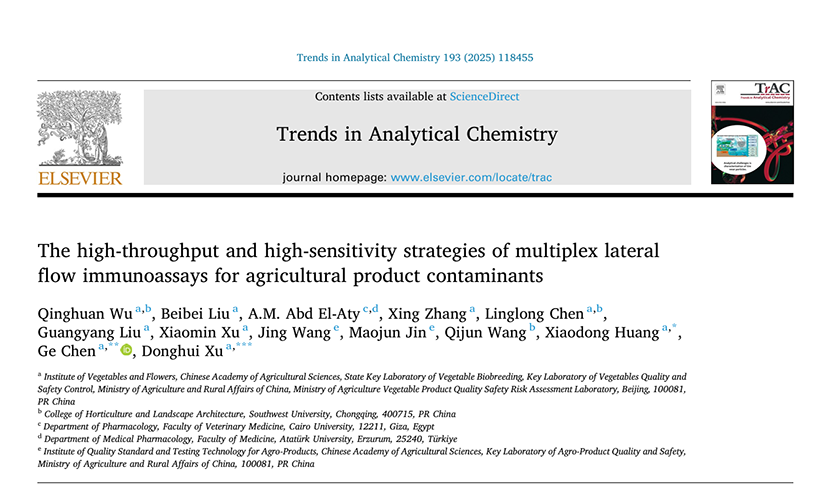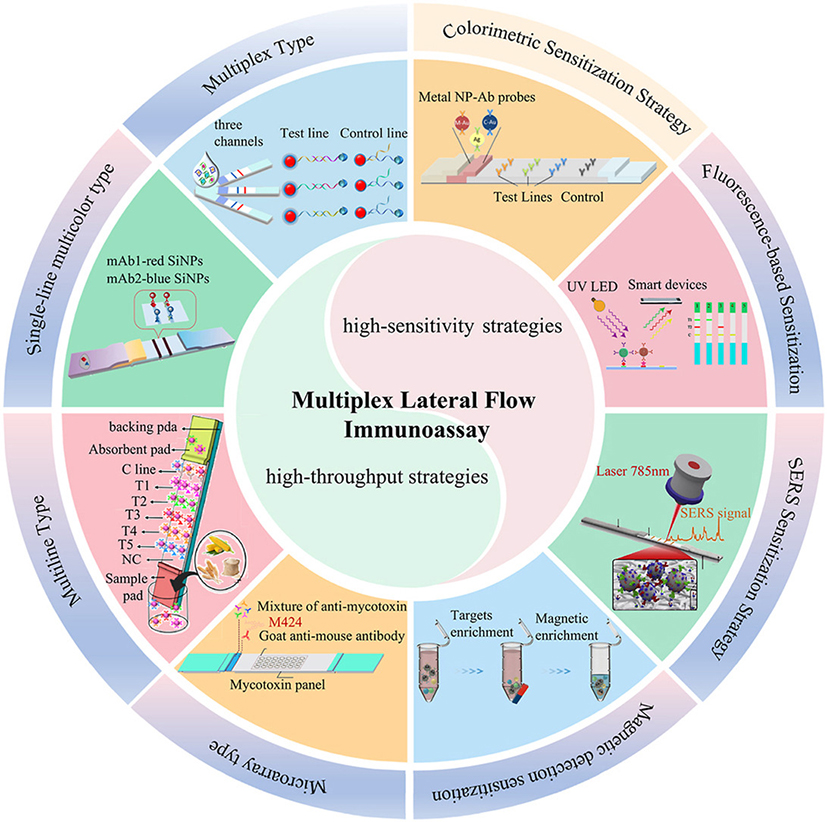Recently, the Quality and Safety Research Group from the Institute of Vegetables and Flowers of the Chinese Academy of Agricultural Sciences revealed the trends of sensitive multiplex immunochromatography for the detection of agricultural chemical pollutants. The related research was published in the internationally renowned journal Trends in Analytical Chemistry (Q1 Top, IF=12) under the title “The high-throughput and high-sensitivity strategies of multiplex lateral flow immunoassays for agricultural product contaminants.”

The issue of multiple pollutants such as pesticide residues, mycotoxins, and pathogenic microorganisms in agricultural products is becoming increasingly prominent. Traditional instrumental methods, which are time-consuming and complex to operate, are unable to meet the timeliness requirements for rapid detection of agricultural products. Developing on-site detection technologies has become a critical need to ensure food safety and public health. Lateral flow immunoassay (LFIA), known for its simplicity, portability, low cost, and fast detection speed, has emerged as a key rapid detection technology for on-site monitoring of agricultural product quality and safety. However, traditional single-channel lateral flow immunoassay techniques limit the efficiency of detecting multiple agricultural pollutants.
To address these challenges, the development of high-sensitivity multiplex lateral flow immunoassay technologies has become a mainstream trend in agricultural safety detection. This study highlights the applicability of four high-throughput lateral flow immunoassay strategies (multicolor line, multi-line, multiplex, and microarray) for the detection of multiple targets, thereby improving the efficiency of immunoassay-based rapid detection technologies for pollutants in agricultural products. Secondly, it provides an in-depth analysis of various signal amplification strategies, such as colorimetric, fluorescent, Raman, and nanomaterial-based enhancements, to improve the sensitivity of lateral flow immunoassays and reduce the false-negative rates for detecting agricultural products pollutants. Finally, the study outlines the current limitations and future trends of multiplex lateral flow immunoassay technologies, offering new research avenue for future on-site technologies.

The Institute of Vegetables and Flowers, Chinese Academy of Agricultural Sciences, is the lead institution for this work. Researcher Xu Donghui, Assistant Researcher Chen Ge, and Associate Researcher Huang Xiaodong are the corresponding authors. Master's student Wu Qinghuan is the first author. This study was conducted at the National Key Laboratory of Vegetable Biological Breeding, supported by the Ministry of Agriculture and Rural Affairs' Key Laboratory of Vegetable Quality and Safety Control, and funded by the National Natural Science Foundation, National Key R&D Program, and the Agricultural Science and Technology Innovation Project of the Chinese Academy of Agricultural Sciences.
Web site of the paper: https://doi.org/10.1016/j.trac.2025.118455